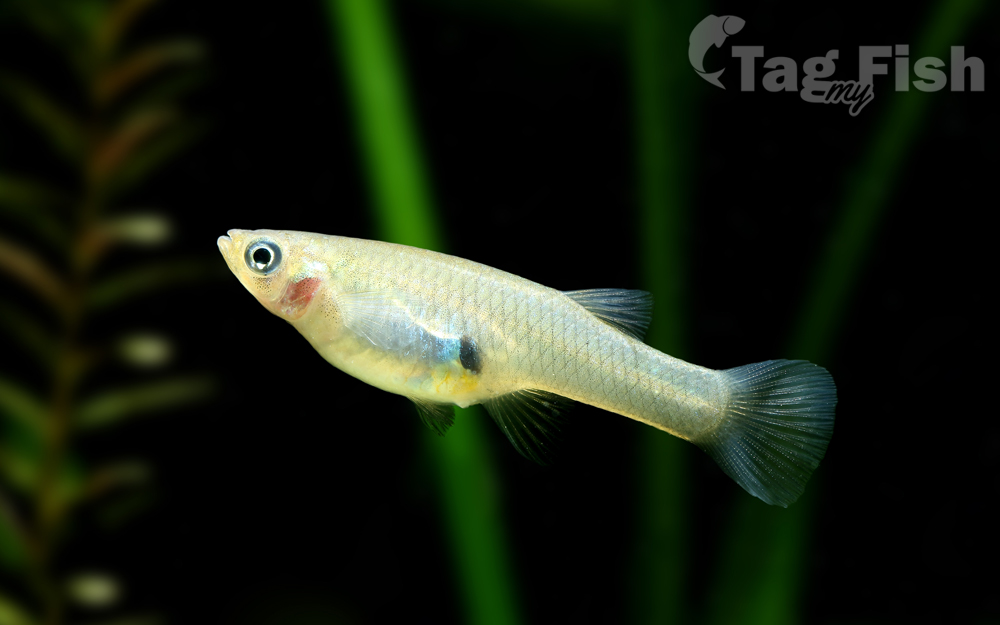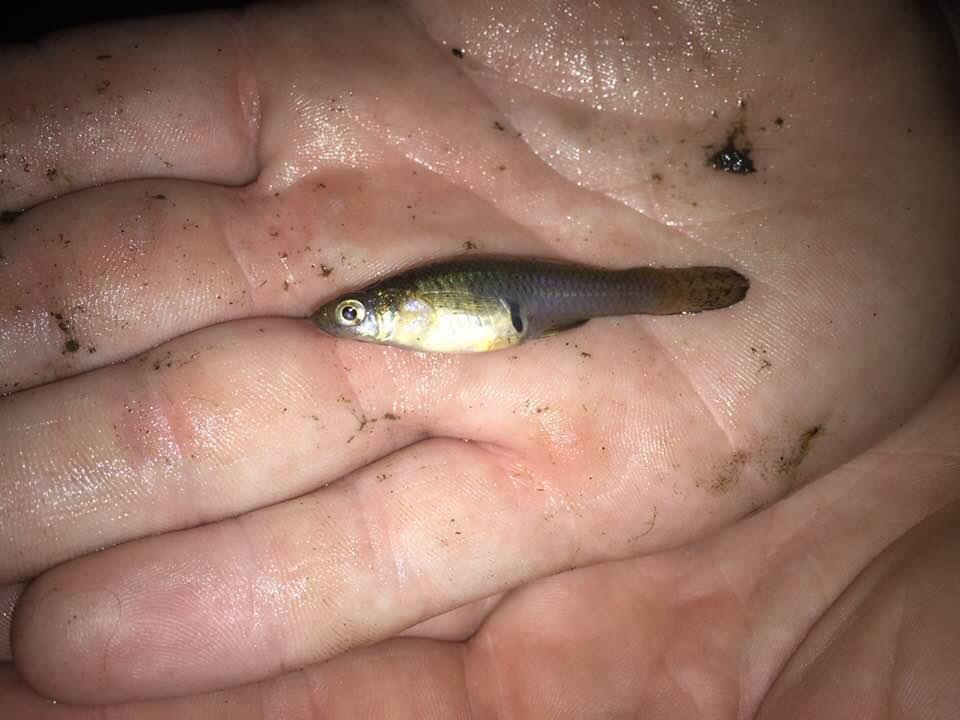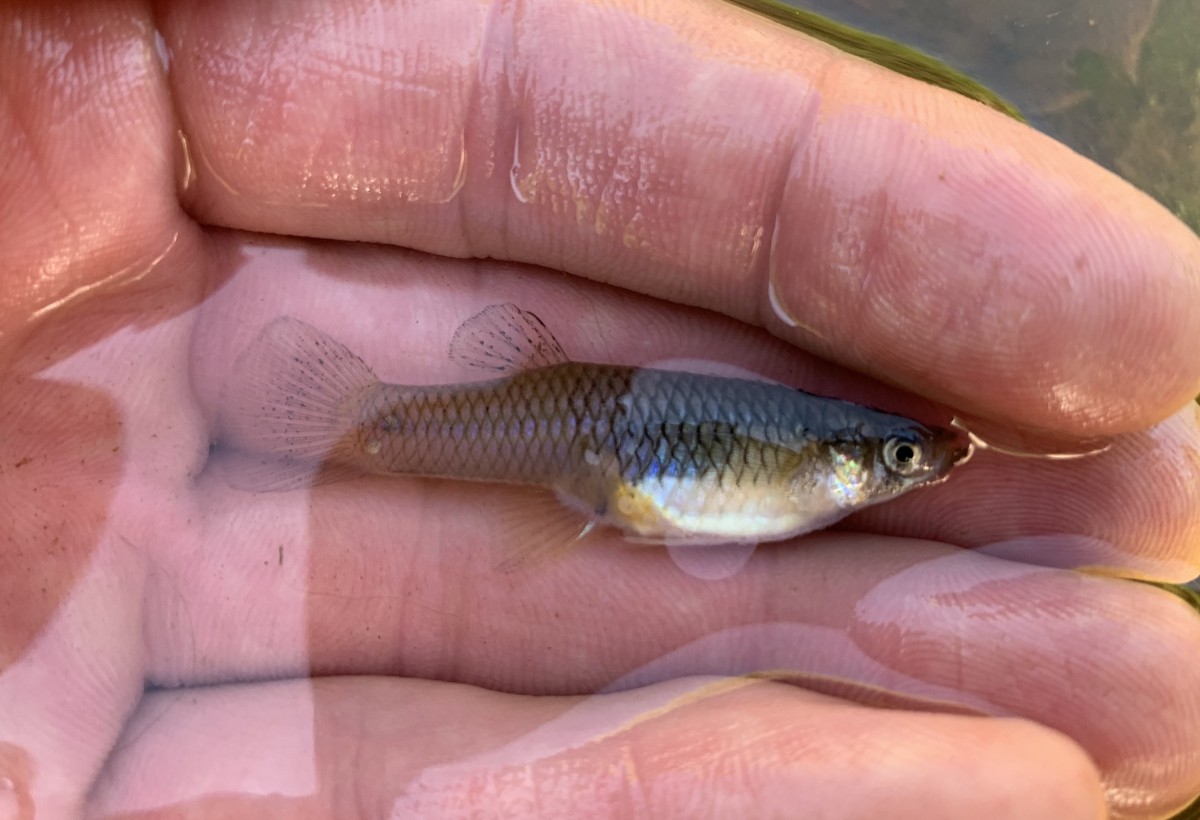Western mosquitofish
(Gambusia affinis)

Classification
General data
The western Mosquitofish (Gambusia affinis) is a species of freshwater fish, also known commonly, if ambiguously, as simply Mosquitofish or by its generic name, Gambusia, or by the common name gambezi. Its sister species, the eastern mosquitofish (Gambusia holbrooki) is also referred to by these names.
Mosquitofish are small in comparison to many other freshwater fish, with females reaching a maximum length of 7 cm (2.8 in) and males a maximum length of 4 cm (1.6 in). The female can be distinguished from the male by her larger size and a gravid spot at the posterior of her abdomen. The name Mosquitofish was given because the fish eats mosquito larvae, and has been used more than any other fishes for the biological control of mosquitoes. Gambusia typically eat zooplankton, beetles, mayflies, caddisflies, mites, and other invertebrates; mosquito larvae make up only a small portion of their diet.
Mosquitofish were introduced directly into ecosystems in many parts of the world as a biocontrol to lower mosquito populations which in turn negatively affected many other species in each distinct bioregion.
Fertilization is internal; the male secretes milt into the genital aperture of the female through his gonopodium. Within 16 to 28 days after mating, the female gives birth to about 60 young. The males reach sexual maturity within 43 to 62 days. The females, if born early in the reproductive season, reach sexual maturity within 21 to 28 days; females born later in the season reach sexual maturity the next season, in six to seven months.
Description
Mosquitofish are small and of a dull grey coloring, with a large abdomen, and have rounded dorsal and caudal fins and an upturned mouth. Sexual dimorphism is seen; mature females reach a maximum overall length of 7 cm (2.8 in), while males reach only 4 cm (1.6 in). Sexual dimorphism is also seen in the physiological structures of the body. The anal fins on adult females resemble the dorsal fins, while the anal fins of adult males are pointed. This pointed fin, referred to as a gonopodium, is used to deposit milt inside the female. Adult female mosquitofish can be identified by a gravid spot they possess on the posterior of their abdomens. Other species considered similar to G. affinis include Poecilia latipinna, Poecilia reticulata, and Xiphophorus maculatus; they are commonly misidentified as mosquitofish.
Habitat
The native range of the mosquitofish is from southern parts of Illinois and Indiana, throughout the Mississippi River and its tributary waters, to as far south as the Gulf Coast in the northeastern parts of Mexico. They are found most abundantly in shallow water protected from larger fish. Mosquitofish can survive relatively inhospitable environments, and are resilient to low oxygen concentrations, high salt concentrations (up to twice that of sea water), and temperatures up to 42 °C (108 °F) for short periods. Because of their notable adaptability to harsh conditions and their global introduction into many habitats for mosquito control, they have been described as the most widespread freshwater fish in the world.













